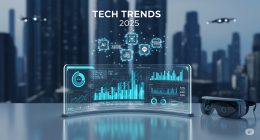Transforming Diagnostics with Smart Technology
How AI Enhances Medical Imaging
Artificial intelligence is reshaping healthcare diagnostics by introducing unprecedented precision and speed. AI algorithms, trained on vast datasets, now analyze medical images like X-rays, MRIs, and CT scans with remarkable accuracy. These systems can detect anomalies, such as tumors or fractures, often faster than human specialists. By identifying patterns invisible to the naked eye, AI reduces diagnostic errors and enables earlier interventions. This leap in technology not only boosts confidence among clinicians but also improves patient outcomes by catching conditions at their most treatable stages.
IoMT’s Role in Real-Time Monitoring
Connecting Devices for Better Care
The Internet of Medical Things (IoMT) complements AI by creating a network of connected devices that monitor patients in real time. Wearables like smartwatches and implantable sensors track vital signs, such as heart rate or glucose levels, and send data directly to healthcare providers. This constant stream of information allows doctors to spot irregularities instantly, reducing the need for frequent hospital visits. IoMT empowers patients to take control of their health while ensuring clinicians have up-to-date data to make informed decisions, ultimately enhancing care quality.
Personalizing Treatment Plans
AI-Driven Insights for Tailored Care
AI’s ability to process massive amounts of patient data is paving the way for personalized medicine. By analyzing genetic profiles, lifestyle factors, and medical histories, AI systems can recommend treatments tailored to individual needs. For instance, machine learning models predict how patients might respond to specific medications, minimizing trial-and-error in treatment. This precision approach not only improves recovery rates but also reduces side effects, offering a more comfortable experience for patients navigating complex conditions like cancer or chronic diseases.
Streamlining Hospital Workflows
IoMT’s Impact on Efficiency
IoMT is revolutionizing hospital operations by integrating devices into a cohesive ecosystem. Smart beds, for example, monitor patient movements and alert staff to potential issues like pressure ulcers. Meanwhile, AI-powered scheduling tools optimize staff allocation and reduce wait times for diagnostic tests. These advancements free up healthcare professionals to focus on critical tasks, improving overall efficiency. By automating routine processes, hospitals can allocate resources more effectively, ensuring patients receive timely and accurate diagnoses.
Enhancing Remote Care Capabilities
Telemedicine Meets AI and IoMT
The rise of telemedicine has been supercharged by AI and IoMT, enabling robust remote diagnostics. AI-driven chatbots triage symptoms, guiding patients to appropriate care before they even reach a doctor. IoMT devices, like portable ECG monitors, allow patients to perform diagnostic tests at home, with results instantly shared with physicians. This synergy expands access to healthcare, particularly for those in rural or underserved areas, ensuring timely interventions without the need for travel, which can be a game-changer for chronic disease management.
Addressing Challenges and Looking Ahead
Ensuring Data Security and Equity
While AI and IoMT hold immense promise, challenges like data privacy and equitable access remain. Protecting sensitive patient information is critical, as connected devices can be vulnerable to cyberattacks. Additionally, ensuring these technologies reach underserved communities is essential to avoid widening healthcare disparities. As the industry evolves, stakeholders are working to address these hurdles, with innovations like secure blockchain systems for data protection and initiatives to deploy IoMT in low-resource settings. The future of diagnostics is bright, with AI and IoMT poised to deliver smarter, more inclusive healthcare.







